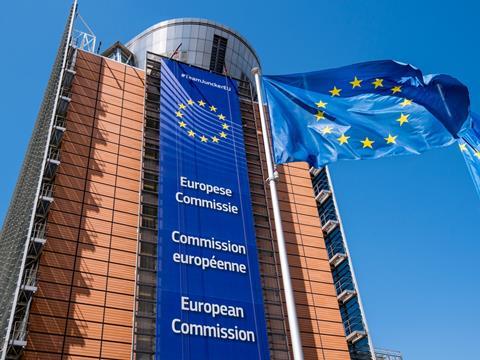
The European Parliament and Council presidency have reached a provisional political agreement on the Packaging and Packaging Waste Regulation proposal; the new rules mandate deposit return schemes, exempt compostable plastic packaging from minimum recycled content targets, enable consumers to purchase takeaway food and drinks in reusable packaging at no extra cost, and more.
Currently, the deal is provisional and pending formal adoption by both the Parliament and Council. The provisional agreement will first be submitted to the Committee of Permanent Representatives.
Its contents are as follows:
Recycled content, downsizing, and safety
Most of the sustainability requirements for all packaging placed on the EU market have been maintained in the agreement, as have the headline targets proposed by the Commission. For instance, those for minimum recycled content in plastic packaging by 2030 and 2040 remain in place.
However, compostable plastic packaging and packaging with plastic components that constitute less than 5% of the pack’s total weight are now exempt from these targets.
As well as reviewing the implementation of the 2030 targets and assessing the feasibility of their 2040 counterparts, the Commission is also expected to review the technological development of biobased plastic packaging three years after the Regulation is entered into force. Based on this information, it must then set out sustainability requirements for biobased content in plastic packaging.
A new measure has been introduced to restrict the placement of food-contact packaging containing per- and polyfluorinated alkyl substances, or PFAS, above certain thresholds on the EU market. The co-legislators have asked the Commission to assess the need to amend the restriction within four years of the Regulation’s date of application to ensure it does not overlap with other rules.
In a bid to reduce unnecessary packaging, a maximum empty space ratio of 50% will be introduced for grouped, transport, and e-commerce packaging. Manufacturers and importers will be expected to minimize the weight and volume of their packaging, unless the packaging design is already protected by the date the Regulation enters into force.
Reuse and refill
New binding reuse targets have been set for 2030 and indicative targets for 2040. These vary between alcoholic and non-alcoholic beverages (excluding wine and aromatized wines, milk, and other highly perishable beverages), transport and sales packaging (excluding packaging used for dangerous goods or large-scale equipment and direct food-contact flexible packaging), and grouped packaging. Cardboard packaging has also been exempted from these requirements.
Moreover, takeaway businesses must allow consumers to bring their own containers to be filled with ready-prepared food or hot or cold beverages at no additional charge. Up to 10% of takeaway products must be provided in reusable packaging formats by 2030.
A general renewable five-year derogation from the attainment of the reuse targets has also been introduced. Member States can be exempted if they exceed the Regulation’s 2025 and 2030 recycling targets by 5 percentage points; if they are on track to meet their waste prevention targets; or if they have taken on a corporate waste prevention and recycling plan.
Micro-enterprises are not held to these targets, and economic operators are given the option to form pools of up to five final distributors to meet reuse targets for beverage packaging.
Deposit return systems
By 2029, Member States must separately collect at least 90% of single-use plastic bottles and metal beverage containers every year. Deposit return systems must be established to reach this goal – but, for pre-existing deposit return systems that achieve the 90% target by 2029, the Regulation’s minimum requirements will not apply.
Member States will also be exempt if they reach a separate collection rate of above 80% in 2026 and introduce an implementation plan featuring a strategy to achieve the 90% separate collection goal.
Restricting single-use plastic
Single-use plastic packaging will also be restricted when applied to fruit and vegetables, food and beverages, condiments, sauces served in the HORECA sector, small cosmetic and toiletry products like shampoo bottles, and very lightweight plastic bags, such as those provided for bulk groceries at markets.
If the deal is approved by the Committee of Permanent Representatives, it will be revised by lawyer-linguists and formally adopted. At that point, it will be published in the EU’s Official Journal and enter into force eighteen months after the date of entry into force.
For a detailed rundown of the Packaging and Packaging Waste Regulation’s development prior to these negotiations, Packaging Europe has compiled a guide to the legislative changes and the industry’s response.
The update comes after a legal assessment conducted by Dentons suggested that the Regulation’s specific rules focused on plastic packaging and exemptions for other materials are ‘very likely not compatible’ with EU law.
An open letter to the European Parliament also saw reuse industry players like Vytal, Interzero, and Bumerang encourage a ban on single-use packaging for on-site consumption, mandatory reuse quotas across all industries, and measures against reuse loopholes to be introduced to the Regulation.
If you liked this story, you might also enjoy:
The Brief: How viable is biorecycling for plastics?
Report: How the top brands are progressing on packaging sustainability
The Brief: Using ocean-bound plastic in packaging – how, why and should we?


















No comments yet